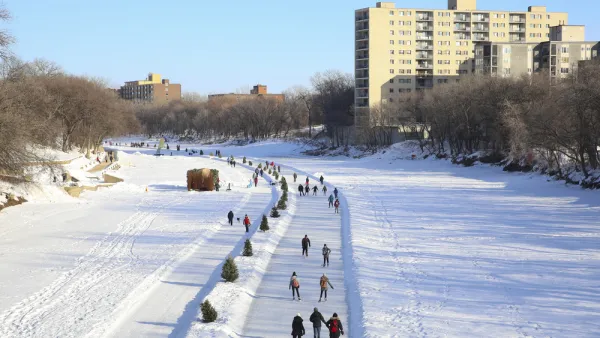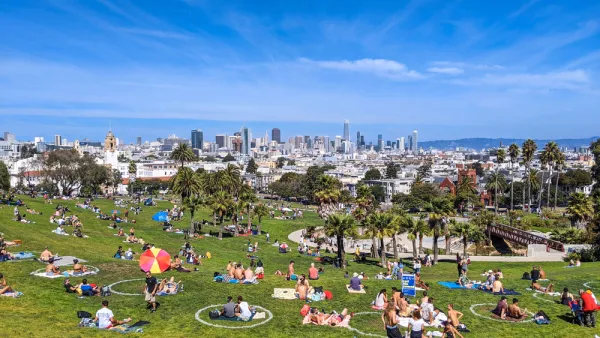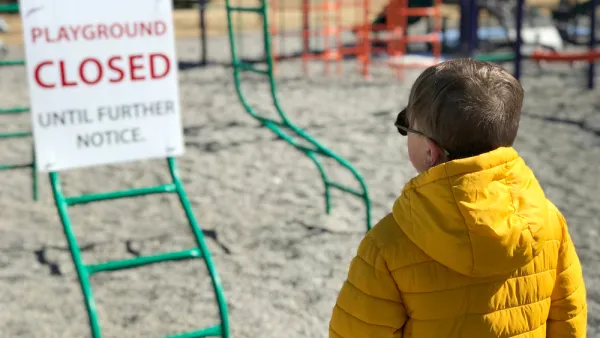Hong Kong provides a lesson in the importance of open space for the health and well-being of residents, especially during the isolation and distancing of a pandemic.

Parks are known to offer a variety of physical and mental health benefits. They are much needed, especially in dense places like Hong Kong where many people live in tight quarters in high-rise buildings. While public green spaces account for 40% of the total land in Hong Kong, it takes an average of one hour for residents to reach one of the largest parks which are known in the city as country parks.
In this article, Chermaine Lee explains the open space challenges that impact the health and well-being of the 7.5 million people living in Hong Kong:
- Hong Kongers have just 29 square feet of accessible public space per person, which is slightly larger than a coffin or a toilet cubicle. In comparison, according to a 2017 study from Civic Exchange, Singapore offers 79.6 square feet of public space per capita and New York City, also known for its high land price, has more than 107.6 square feet of public space per capita.
- Hong Kong's parks are not particularly user-friendly. Grassy or landscaped areas are typically off limits so that park patrons are only able to look at, but not rest or relax on them. As Hendrik Tieben, director of the urban design program at the Chinese University of Hong Kong, explains, "There’s not much you can do in the [urban] parks, like sitting on the grass, eating in a park and so on... People are not allowed to touch the plants most of the time."
- Staying at home is not a great option for the many Hong Kongers who live in very limited space due to extremely high housing costs.
- Historically, creating accessible public open spaces has not been a priority for the government and privately-owned public spaces are not always welcoming or truly accessible to all.
The article goes on to describe efforts to transform more of Hong Kong's underused areas into public spaces to meet the needs of its residents. The Hong Kong government has made some progress over the years, including building waterfront promenades. The Leisure and Cultural Services Department, which is responsible for managing the city’s parks, has increased the number of pet gardens from 19 in 2010 to 45 in 2019. The department also provides 50 multi-purpose lawns for public use, rising from 39 in 2010 to 51 in 2018.
FULL STORY: Hong Kong’s public space problem

National Parks Layoffs Will Cause Communities to Lose Billions
Thousands of essential park workers were laid off this week, just before the busy spring break season.

Retro-silient?: America’s First “Eco-burb,” The Woodlands Turns 50
A master-planned community north of Houston offers lessons on green infrastructure and resilient design, but falls short of its founder’s lofty affordability and walkability goals.

Delivering for America Plan Will Downgrade Mail Service in at Least 49.5 Percent of Zip Codes
Republican and Democrat lawmakers criticize the plan for its disproportionate negative impact on rural communities.

Test News Post 1
This is a summary

Test News Headline 46
Test for the image on the front page.

Balancing Bombs and Butterflies: How the National Guard Protects a Rare Species
The National Guard at Fort Indiantown Gap uses GIS technology and land management strategies to balance military training with conservation efforts, ensuring the survival of the rare eastern regal fritillary butterfly.
Urban Design for Planners 1: Software Tools
This six-course series explores essential urban design concepts using open source software and equips planners with the tools they need to participate fully in the urban design process.
Planning for Universal Design
Learn the tools for implementing Universal Design in planning regulations.
EMC Planning Group, Inc.
Planetizen
Planetizen
Mpact (formerly Rail~Volution)
Great Falls Development Authority, Inc.
HUDs Office of Policy Development and Research
NYU Wagner Graduate School of Public Service





























